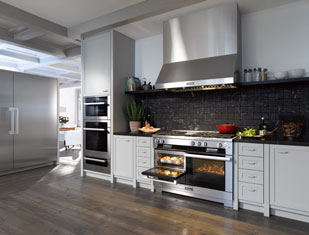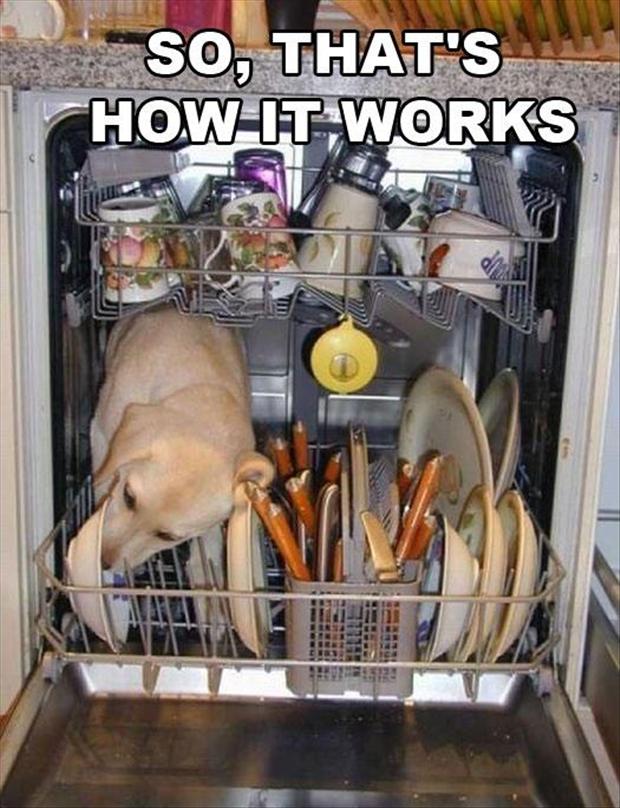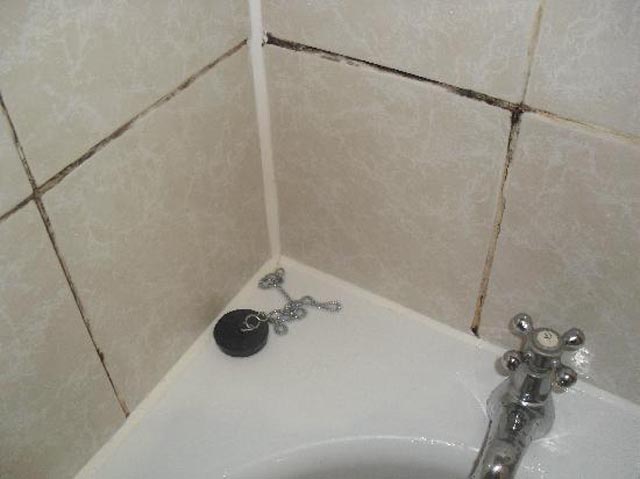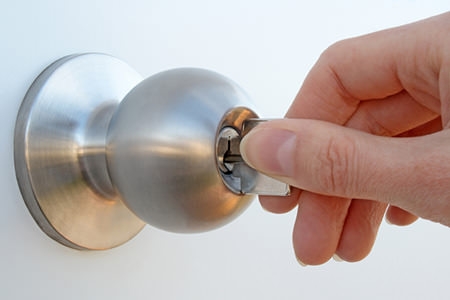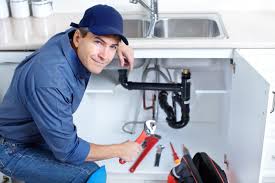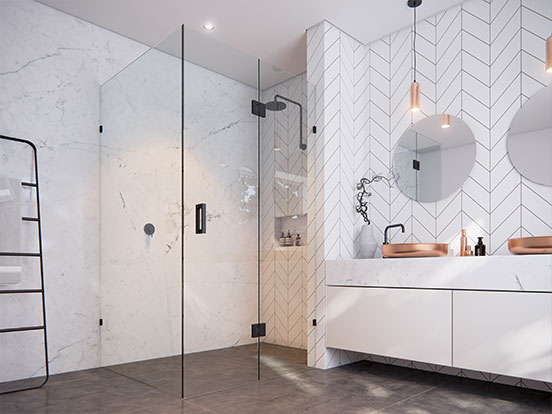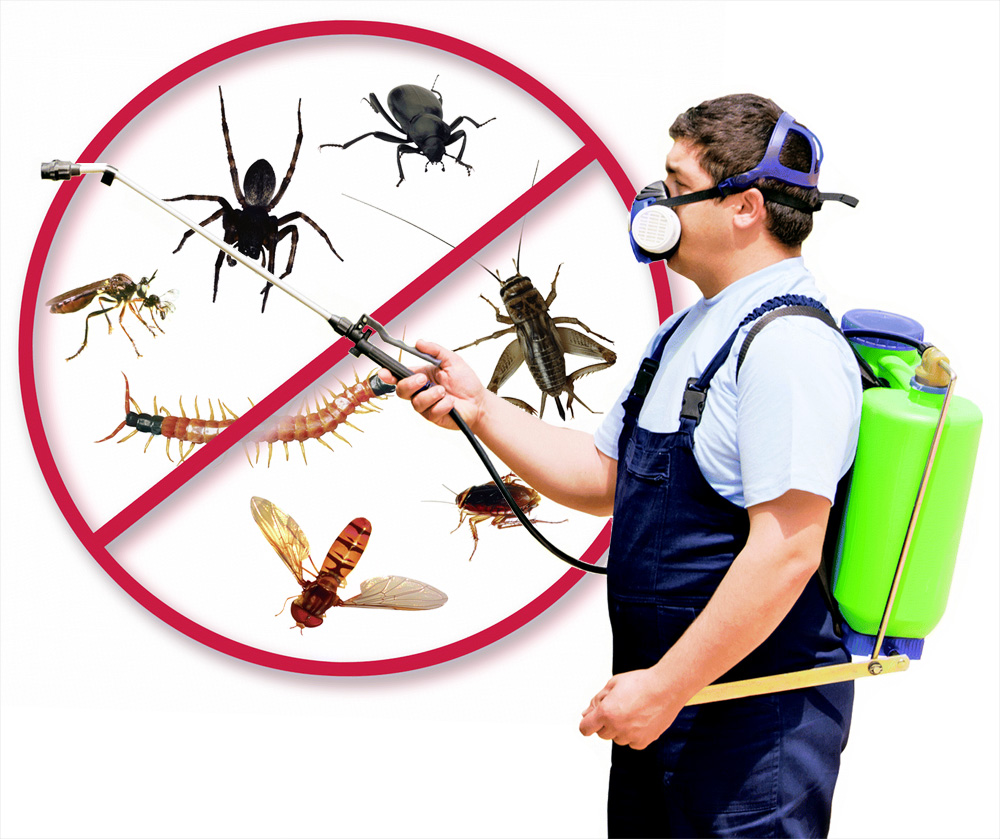Tenants Guide to Maintenance with your new rental property
Introduction
Hi, and welcome to our Maintenance processes E-book.
Our goals regarding maintenance are simple.... to maximise results for our tenants and landlords.
Our team is committed to the care of your property in terms of proactively handling any required maintenance in a professional and efficient way and to ensure a safe environment is maintained in your home.
To minimise risk, we only use qualified and appropriately licensed tradespeople who provide prompt service at competitive rates assuring peace of mind and a worry-free property investment experience.
We look forward to assisting you and developing a ‘client for life’ relationship that extends to all past, present and future clients.

Maintaining your rental property
When dealing with maintenance and malfunctions, things can often be safely rectified with a few simple trouble shooting steps. We kindly ask that if you experience any issues with your property, please refer to this guide first before contacting our office.
This will most likely result in having the problem fixed safely and quickly with little expense.
However, should you ever be in doubt, please lodge the maintenance to our office as per the final page of this Ebook.
We urge you to always put safety first - especially regarding gas and electricity.
If you do need to speak with us about any maintenance items, we ask that wherever possible, you provide us with the all the relevant information to assist us in organising the appropriate trades-person.
This includes:
1. Your Name
2. Property Address
3. Date the Issue First Occurred
4. A Detailed Description of the Problem
5. The Appliance Involved
6. Model and Brand Information
7. Whether the Problem is Related to Gas, Power, Water, Communications
8. Photos to assist
Please see the final page in this e-book for how to report maintenance
Smoke alarms
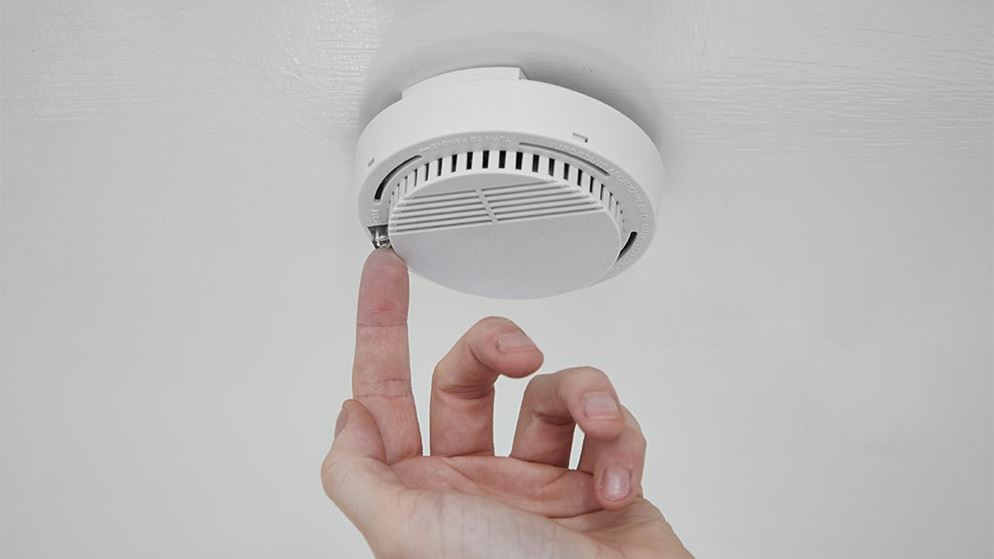
Smoke Alarms
Your detectors should have a “test” button. If the alarm sounds, you’re good to go. If not, replace batteries immediately and test again. If it still doesn’t sound, it’s possible there’s simply corrosion on the battery terminal and it won’t detect new batteries. Clean it and try again. If it still doesn’t work, you’ll likely need a new detector.
If your smoke alarm is beeping, this is often the result of batteries running out of power. Please replace the batteries and re-test the alarm to ensure it is functioning correctly. If your alarm is hard wired, it will still have a battery back-up and should not be affected by loss of power. If your hard wired smoke alarm is intermittently beeping, it may be an indication that the smoke alarm unit itself requires repair/replacement.
Smoke alarms in most properties are serviced by a company BCMC Solutions.
They have a direct line for beeping smoke alarms service: 1300 698 040
All issues with Smoke Alarms should still be reported to the office as soon practical after they are discovered.
Under the service provided by BCMC Solutions you may find that your property is included in our annual smoke alarm program - each year, a trades person will visit to ensure the alarms are working and legislatively complaint. You MUST ensure you arrange suitable access with the technician when you are contacted.
Please see the final page in this e-book for how to report maintenance
TV Reception
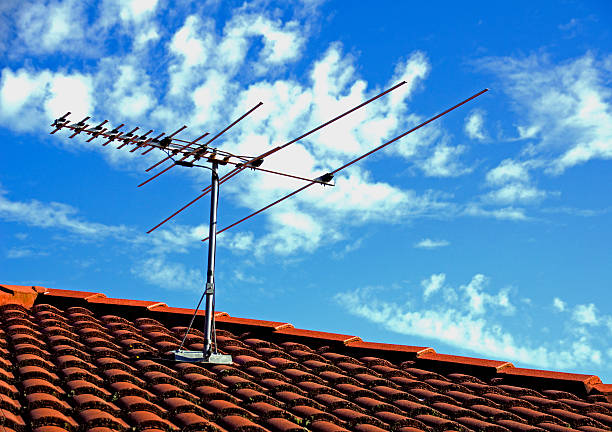
Most TV reception difficulties are caused by problems with antennas, television equipment or installation and can often be resolved easily.
- Check if the problem occurs on all channels or just one.
- Check all the cables are connected correctly and not loose.
- Try another TV.
- Restore the default settings and rescan on the digital receiver.
- Remove all other equipment (DVDS, PVRS, pay-tv boxes and surround sound systems) and see if the problems still occur.
- Digital - if removing other equipment you should restore and rescan again.
- Move radios or computer equipment away from the TV.
- Check your antenna has not moved or been broken (damage on one small part can cause the loss of a single channel).
- Turn off nearby electrical appliances and see if the problems cease.
- Check with your neighbours - if they aren’t having the same issues - it’s something in your house or your antenna.
- Check to see if there is any maintenance work happening on the transmitters for your area.
Please see the final page in this e-book for how to report maintenance
Cooktops, Ovens & Rangehoods
Electric Cooktops
The first step if your cook top is not working is to isolate the issue.
- Has the safety switch breaker tripped or the fuse blown? Sometimes an electrical surge will interfere with the power supply, causing breakers and fuses to react to protect your appliances. Simply return the safety switch to the ON position in the Fuse Box located near the front door.
- Is the power cord plugged in securely? Grasp it by the plug and wiggle slightly to determine a good connection. Look over the power cord for signs of damage such as missing rubber coating with wires showing through, sharp crimps or evidence it is getting pinched while plugged in. Pull out the oven slightly if its position is causing the problem.
Gas Cooktops
To troubleshoot ignition problems for burners on a modern gas stove, it’s important to understand the basics. When you turn on a burner, an electronic igniter generates a spark that ignites gas going to the burner. If you are unable get your burners to ignite:
- Confirm the gas supply is connected to your property. If the stove suddenly will not function, there may be no gas connected to the home at all. You can Google ‘Gas Supply Problems’ to get notifications from your local provider regarding local outages.
- If the gas supply issue is only specific to your property, (there is no outage in the local area), contact your provider to ensure there is no problem with supply to your property.
- Check you have paid your gas bill up to date.
- If you live in a multi-unit development, contact your Owners Corporate if your supplier confirms there is no issue.
- If gas is connected to the property and the stove is not working, confirm whether the elements and hobs are in their correct positions. Please check to ensure that the element is in its correct position on the stove and that there are no obstructions.
- Allow the burner grates to become cool to the touch if they have been on, and take them off the stove. Check the igniters one at a time. Turn on one of the burner knobs all the way until it stops and listen for the click of the igniter at that burner. If the igniter doesn’t click, note that burner and check the remaining igniters. Note a burner that doesn’t ignite when the igniter clicks, and proceed with the troubleshooting.
- Turn on a burner knob halfway. Hold the flame of a butane fire lighter close to that burner. If the gas doesn’t ignite, then a plumber will need to check the gas line to the burner. If the burner ignites, turn off the knob and proceed with adjusting the igniter.
- Make sure the burner grates are fitted correctly. If they have been recently taken off for cleaning then they may not have been put back correctly. You can slowly turn the grate until you feel it move into the correct position.
- Often the problem may be a buildup of material preventing gas from getting through to the igniter. Strip the gas cook top and scrub anywhere that needs it and replace all parts and try igniters again. Do not use harsh cleaners or scourers on stove tops!
Ovens
If the oven works – it just doesn’t work right- producing little heat, the problem is likely not the element, but another connected part.
- First check the oven door. The gasket surrounding the door must seal in the heat to maintain temperature. If you notice rips, tears or missing portions, this may explain the problem.
- Test the thermostat. Place an oven thermometer inside the oven and verify the temperature.
Electric Ovens
Refer to your appliance instruction manual first. If there is not one in the property, Google the model as most are down loadable from the Internet. Model information is usually found inside the oven door. Following that below are our troubleshooting recommendations.
Further Tips:
- Is the electricity connected by the provider? Please contact your provider to ensure it is not a supply issue. Should there be a supply issue specifically to your property and not the immediate area, please ask for as much detail as possible and contact our office to advise of the problem.
- Is the main power supply turned on at the meter/fuse box? Please check your meter box to ensure that the switches are all turned on and functioning. Please contact our office if your safety switch is tripping when using the oven and/or stove.
- Is there a separate power switch for the oven/stove? Please check if there is a power point/switch specifically for your oven/stove. These can often be located on the wall of the kitchen or in the nearby cupboards.
- Ensure that the timer function is on. Some models require the timer to be on to operate the oven.
- Check the oven control knobs. Some have separate cycle and temperature knobs, others combine all functions on one knob. Either way, are they set properly? Have you recently removed the knob, perhaps to clean the oven? If the knob was pulled off, it may not be aligned properly. Try pulling the knob off again and repositioning it for a quick, easy fix.
- Does your element work? Since the element, at the top of the oven, is separate from the bake element at the bottom of the oven, if one works and the other doesn’t, you know the problem is either in the element or the receptacle block into which it plugs. Start by wiggling the element to see if it is simply loose.
Gas Ovens
Most of the malfunctions that affect gas ovens involve the supply and ignition of gas in the burners and the oven. If your oven is not heating up;
- Is the gas connected by the provider? Please contact your provider to ensure it is not a supply issue. Should there be a supply issue specifically to your property and not the immediate area, please ask for as much detail as possible and contact our office to advise.
- Check to be sure the oven is plugged in and getting power and that the gas valve is open. If you have an older oven with a mechanical instead of a digital timer, check to make sure you haven’t bumped it off the manual setting. If your oven still won’t light, you probably need a new igniter. Even if you see the igniter glowing, it can be faulty.
- Clean the igniter and burner holes. Start by cleaning the spark igniter. The igniter is the white ceramic nub that’s located near the base of the burner. Burner holes can also prevent the burner from lighting. Use a needle to clear the tiny hole or holes in the burner (near the igniter).
Range hood
If your Range hood is not filtering well, using a water-based de-greaser from the supermarket, simply fill the sink with hot water and de-greaser, drop in the filter and let the de-greaser do all the work. The filter will come out sparkling clean in just a few minutes. Then rinse it off. Some types can also be placed in the dishwasher (best to check with the manufacturer first).
Dishwasher
Dishwasher
Dishwashers need to have their filters cleaned regularly for optimal performance. To do this, remove the bottom dish rack & pull off the filter cover. Pull out the basket and clean out all food scraps & rinse the filter to remove any slime. Put back into place & try again.
Another cause of dishwasher issues can be that the pipes that drain the water from the dishwasher after use are not clean. This is a common problem if you have been using tablets instead of powder for your dishwasher, as they have a problem breaking up completely and the residue can build up in your pipes. You will need to purchase a dishwasher cleaning product (available from supermarkets) and follow the manufacturer’s instructions. If after referring to your user manual (available online if you don’t have one handy) for troubleshooting then try the tips below.
Dishwasher Doesn’t Run
- Be sure the power is on, the door is latched, and the control is engaged. If absolutely nothing happens—in other words, nothing on the control panel lights up and there are no other signs of life—the appliance may not be receiving power.
- Check the safety switch that serves the dishwasher for a tripped circuit breaker or blown fuse. If you find one, switch the breaker to OFF and then back to ON or replace the fuse.
- Check dishwasher switches & timer. If electrical power is available to the dishwasher but the appliance doesn’t run, the problem is likely a defective door switch, timer, or selector switch.
Dishwasher Doesn’t Fill
- Make sure the water is turned on. Check the hot water supply stop valve, normally located under the sink. Open it all the way by turning it counterclockwise.
- If water supply on already, thoroughly clean dishwasher and clear any blockages.
Dishwasher Doesn’t Drain
Following a cycle, a small pool of clean water inside the tub is normal. An excessive amount of water means the pump isn’t pumping water out properly.
Shut off the power to dishwasher —remove the strainer located under the bottom spray arm at the base of the interior. Unscrew the cap, lift the spray arm off, and remove any clips that hold the strainer to get it out. Scrub it clean with a brush and then replace it.
To prevent future blockages ensure you rinse dishes prior to washing them.
Dishwasher Doesn’t Clean Dishes Properly
- Try using ‘Finish’ dishwasher cleaner in an empty dishwasher to fully clean the unit.
- Check that the jets are not clogged with debris and preventing water from spraying.
- Shut off the power to dishwasher and remove the strainer located under the bottom spray arm at the base of the cabinet. Unscrew the cap, lift the spray arm off, and remove any clips that hold the strainer to get it out. Scrub it clean with a brush and then replace it.
- Check arms are free of debris and moving freely. When dishwasher is on the arms rotate, if they are stuck then the dishes will not be cleaned properly.
If you have tried these troubleshooting methods and your dishes are still coming out unclean please report as per the maintenance procedure on the last page of this Ebook
Mould
Mould is primarily a sign of poor ventilation. Whenever using hot water such as in the shower or bath, when boiling for cooking, steaming, using an electric clothes dryer or rice cooker for example, ALWAYS keep windows open to avoid the development of mould.
Should mould appear, the sooner you treat it, the better. Bleach, vinegar, commercial mould treatments available from supermarkets are all recommended.
If you have signs of mould in cupboards, mould absorbers also available from supermarkets should be used and replaced regularly.
Always notify the office either via email or at routine inspections of any mould that has been present in the property. If the mould continues to occur please lodge the issue as miantenace via the instructions on the last page of the e-book.
Electrical Issues
Light Globes Not Working
It may sound silly, but many people aren’t sure how to change a light bulb.
1. First make sure the power is turned off. The safest way to do this is to switch the safety switch off.
2. Allow the bulb to cool before touching it.
3.Take the bulb out of the socket. The way you do this will depend on whether your bulb has a bayonet mount or a screw fitting:
-
Bayonet Mount (two prongs): Grasp the bulb lightly but firmly, push upwards gently and turn anticlockwise until it is released from the socket.
-
Screw Fitting: Keep gently twisting anticlockwise until the bulb comes loose from the socket.
4. Insert a replacement bulb lightly but firmly into the socket. Depending on the type, turn it clockwise until it locks into place or keep gently twisting clockwise until it won’t go any further.
-
Once the bulb is in, turn the power back on again and switch on the light.
The old bulb needs to be disposed of safely as the glass is fragile and very sharp. Use the packaging from the new bulb to wrap the old one for safe disposal.
As always, safety is crucial when working with electrical or wiring faults. Remember to check the wattage on the used bulb and replace it with a bulb of the same wattage and to dispose of the bulb well out of the reach of children. Don’t put your fingers in the exposed light socket.
Flickering Lights
-
Make sure your light bulb is screwed all the way into its socket. You should also check to see if your bulb is the proper wattage for the socket you are using.
-
If the bulb is securely in its socket and the correct wattage, try another bulb. That will tell you if the bulb was faulty or just old.
No Power
-
Is the electricity connected by the provider? Please contact your provider to ensure it is not a supply issue. You can also Google ‘Power Outage’ and you will be redirected to notifications in your local area.
-
If you are in a multi-unit /townhouse complex, are all properties out of power or just you? If all the development is affected, ring your Owners Corporation representative before calling our office.
-
If you are in a stand-alone house and there is a supply issue specifically to your property and not the immediate area, please check if the mains power supply is turned on at the meter/fuse box and all the switches turned on and functioning.
My Power Points Aren’t Working, but I Still Have Lights
- Chances are you have just used a faulty appliance and it has tripped your safety switch. Unplug the last appliance used, (commonly a hair dryer, kettle, toaster or clothes dryer) and turn the power point off. Head to your meter box and check your switches - one or all of them will point to ‘OFF’. Turn this one back on. If you re-plug in the appliance and it happens again, your appliance is faulty and either needs repair or replacement.
- If one appliance being un-plugged did not fix it, unplug ALL appliances in the house (including fridge, alarm clocks - everything.) Go back to the meter box, hit the button (there will only be one or two) which will turn all of your fuses off. Then turn them back on one by one.
- Go back into the house - plug in appliances one by one. It is best to start with a noise making appliance, like the TV, so if when you get to the faulty appliance, when the TV goes off, it is easy to tell which one is the cause.
If an issue proves to be a faulty tenant appliance or blown light globe, the electricians call out fee becomes the responsibility of the TENANT - not the landlord. Approx cost of electrician to attend - $100 + gst
Please see the final page in this e-book for how to report maintenance
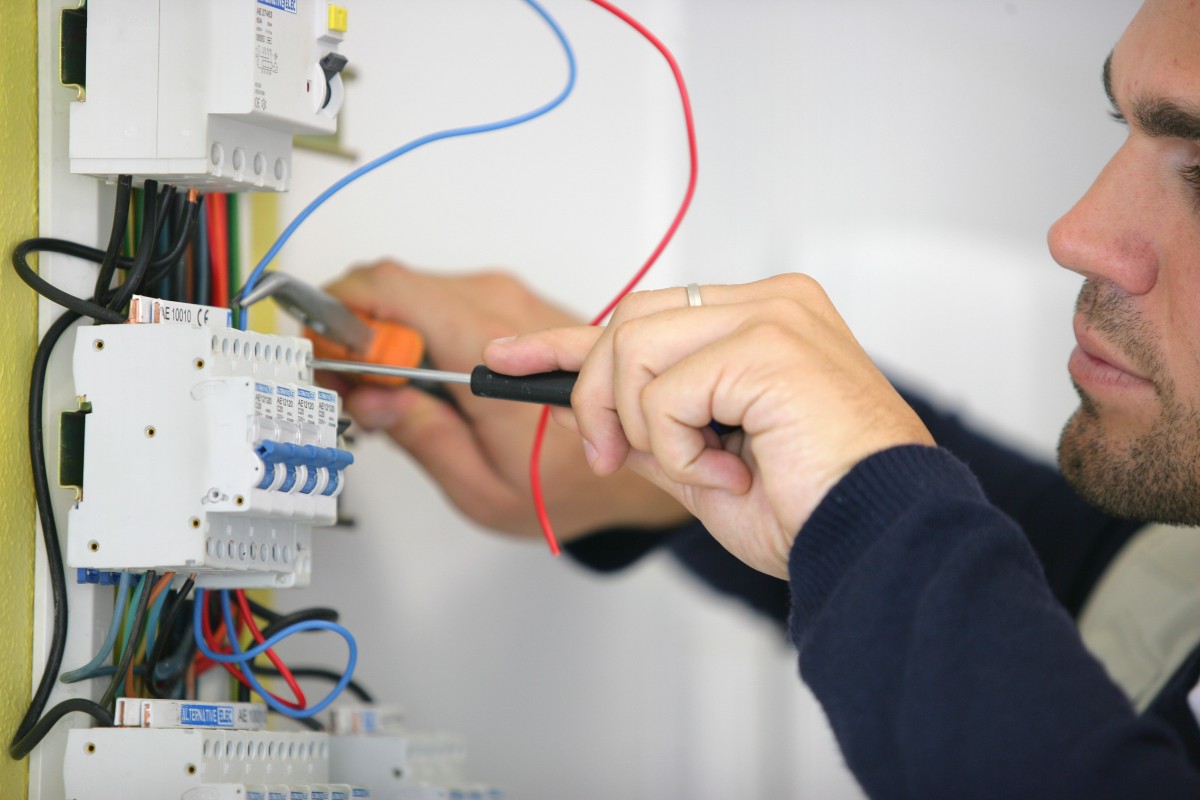
Remotes
The most common cause of remotes not working is dead batteries. Your first step should be to test these with a fresh set. If the remote works fine (the indicator light is coming on) but the unit it operates fails to engage, first consider the power source to that item.
If that fails to rectify the issue, rule out electrical issues. Check the circuit controlling the item in the circuit board. Reset a tripped breaker – which will be out of line with the other breakers. Even if the breaker looks fine, try turning it off, waiting about 60 seconds, then turning it on again to reset the connection.
Doors & Locks
Sticky Hinges
Use an aerosol lubricating oil like WD40. Lubricating oil is perfect for fixing squeakiness. Ask your hardware store if you’re not sure what’s best for your needs.
- The oil used should be capable of penetrating the hinges. An alternative to aerosol is to get a can or container that has a thin nozzle able to access the area.
- Spray the oil right onto the hinge. Open and close the door a few times. It should start to do the trick almost immediately.
Sticky Locks
If your key is failing to turn the lock, please try;
- Lubricating the key with Graphite (a good alternative to this is to try and lightly shade the key with a grey lead pencil) to see if it will work temporarily.
- If one key works on a specific lock and another key does not work on the same lock, please have the working key cut.
- Please report any issues with keys/locks to your Property Manager as these suggestions may only work for a very short period of time and may require the lock to be serviced.
Sliding Doors
Sliding doors get sticky and hard to open when the wheels are out of adjustment or the track gets dirty. Here’s how to repair your sliding door.
- Start with a good cleaning. Scrub caked dirt and grime out of the track with a stiff brush and soapy water. If the door still doesn’t slide smoothly, the rollers either need adjusting or replacement.
- Locate the two adjusting screws at the bottom of the door (on the face or edge of the door) and pry off the trim caps that cover the screws. If one side looks lower, raise it until the door looks even on the track. If the door still sticks, turn both screws a quarter turn to raise the whole door.
- If the door still doesn’t glide smoothly, the door will have to be removed and the rollers examined. Call your Property Manager and we will arrange this maintenance.
Please see the final page in this e-book for how to report maintenance
Plumbing & Hot Water
Plumbing Issues
There are multiple likely issues with plumbing in any property, new or old. We have listed the most common concerns below with some handy tips to fix the problem.
Dripping Taps
Most likely a washer is the cause and it will need to be replaced. If you do not know how to do this, don’t try! If you do, ensure you shut off the water supply to the property and remove the dysfunctional tap head and replace the washer with the specific size. When contacting your Property Manager to arrange a plumber, please advise the following:
- Hot or cold water
- Flick mixer or single tap
- Where is it located - shower, basin, sink, bathroom, kitchen etc
Burst Pipe
If you suspect a pipe has burst, immediately turn off mains to stop the water running. The mains tap is located near the front of the property next to the water meter. Contact your Property Manager to advise the following for an urgent repair;
- Make/Model and if gas or electric (for hot water systems)
- Location (inside/outside/ roof)
- Where is the leak coming from
Roof Leak
It is important to first determine the cause of a roof leak before it can be sorted. If there is water near anything electrical, shut the power supply to the property off at the mains first.
Locate buckets and bowls to catch the water if appropriate.
Determine whether the cause is rain or a water supply. If the property is underneath another floor or unit, it is likely to be a supply issue as opposed to weather. If you have another unit above you, contact your Owners Corporation immediately.
If the issue is really bad, contact the SES as a matter of urgency and then let us know as well. Never try to get on a roof when it is raining.
Drains Blocked or Slow to Empty
This is usually caused by blockages - commonly food in kitchens and hair build up in bathrooms. Attempting to unblock it with a plunger or product like Draino (both available from supermarkets and hardware stores) should clear up any minor blockages. It may need to be used weekly or monthly to keep drains flowing freely.
Method 1: Boiling Water
- Boil up as much water as your kettle or pot will hold.
- Pour it slowly down the drain in two to three stages, allowing the hot water to work for several seconds in between each pour. This is usually the easiest and quickest way to unclog a drain.
Method 2: Bent Wire Hanger
- Simple, but surprisingly effective. Take a regular wire coat hanger, straighten it out as best you can.
- Bend one end over to create a small hook. Push that past the drain cover and start fishing. You should be able to get all sorts of hair and nasty stuff out of the drain. Remember, you always want to be pulling gunk out, not pushing it further.
- When you’ve got as much out as you can, run the hot water, and it should clear things up nicely.
If there are still blockages after these tips have been tried, please contact your Property Manager and we will arrange maintenance.
Hot Water System
There are two main things to check here, when you turn the hot tap on, is there only cold water, or is there no water at all. Next - Determine if the hot water system is gas or electric.
Electric
- Is the electricity connected by the provider? Please contact your provider to ensure it is not a supply issue. Should there be a supply issue specifically to your property and not the immediate area, please ask for as much detail as possible and contact our office to advise of the issue.
- Is the main power supply turned on at the meter/fuse box? Please check your meter box to ensure that the switches are all turned on and functioning. Please contact our office if your safety switch is tripping when using the hot water service.
- Does the overflow valve need to be released? Please push the overflow valve in to the up position to release water from the overflow pipe. This should be completed approximately every 6 months to avoid issues.
Gas
- Is the gas connected by the provider? Please contact your provider to ensure it is not a supply issue. Should there be a supply issue specifically to your property and not the immediate area, please ask for as much detail as possible and contact our office to advise of the issue.
- Is the gas valve turned on at the meter? Check the meter to ensure the gas valve is on.
- Is the pilot light on? If the pilot light is not on, follow the instructions to relight the pilot (if you do not have the instructions or are unsure, please contact our office as some systems will be required to be re-lit by a trades person)
Lighting the Pilot Light
- Locate the gas regulator valve on the hot water system. It is located on the outside of the hot water system where the gas pipe enters the unit and has a knob on it. The valve regulates gas flow to the pilot burner beneath the hot water tank.
- Turn the valve knob to the “Off” position. Wait five minutes.
- Locate the pilot burner beneath the gas water heater and lift off/unsnap any access cover to it.
- Turn the gas regulator valve’s knob to “Pilot”, press down on it and hold it down. This starts the flow of gas to the pilot burner. On some hot water system models, you press and hold down a separate red button to start the pilot burner gas flow.
- If your heater has a built-in piezo-electric spark pilot igniter, look for a red or black button labeled “Ignition” on the top or side of the gas valve. Push the button to ignite the pilot. You will hear a click as the igniter sparks.
- Hold down the regulator valve knob for at least one minute after the pilot has been lit. This allows the pilot flame to heat the thermocouple safety sensor that detects the presence of a live pilot flame. Slowly let up on the regulator valve knob. When the pilot light stays lit after you release the knob, turn the knob to “On”. You should hear a muffled “whoomp” sound as the main burner ignites.
No Hot Water
- Check the isolating switch (typically located at the switchboard) and next to the hot water system (if installed) are both turned on.
- Check the safety switch marked “HOT WATER” or “HWS” at the switchboard.
- Check the power cord is plugged in (if applicable) and is turned on.
Are You Using More Hot Water than You Think?
Monitor your hot water usage and check if any outlets are using more hot water than you realise. It is easy to underestimate the amount of hot water being used especially with certain shower heads.
- Monitor the length of time spent in the shower, it’s easy to spend longer than you realise!
- Use cold water to wash your clothes.
I Only Have Cold Water
This is an issue with the hot water system.
- Check the fuse box to ensure power to the tank is on. If it is not on, switch it on, then wait a few hours for the water to heat up.
- If it is on, check the hws is full: Locate your hot water tank, find the ‘top up valve’ & the ‘overflow pipe’ (if your tank is inside, make sure you have something to catch the overflow water).
- Lift the valve - if it takes more than 2-5 seconds for water to flow from the overflow (WARNING: this will be HOT water) then chances are the water in your tank was low and this action will have topped it up with cold water. Wait a few hours, for the water to heat.
- If you now have hot water - great! If not, (or if water flowed from the overflow straight away) then the problem is likely an electrical problem. Please contact your Property Manager to report the issue and we will arrange maintenance.
Hot Water Unit Emitting a Beeping Sound
Your hot water unit may have a battery powered terminator valve. This device will be located on the side of the hot water service. If no leak is evident around the unit, the beeping will likely be notifying you that the batteries are dying, you will need to simply replace the batteries in the device.
Toilet
The Toilet Is Blocked
This can be caused by tree roots which will need a professional to attend.
Please ensure nothing other than human waste and toilet paper is flushed down the toilet. The Full Flush button should also be used at least once a day to allow all waste to flow out of your toilet. Female sanitary products, baby wipes, cleaning wipes, nappies etc should NEVER be flushed down the toilet.
If you have liquid dish washing soap in your kitchen, simply add a few squirts to your clogged bowl and then follow with a pot of hot water poured in from waist-level height. Ideally, the soapiness and the weight of the hot water being poured into the bowl will help clear out whatever is clogging your drain. You can also try using a plunger.
The Toilet Is Not Flushing
There may be a time where your toilet cistern is out of action or your water services have been temporarily disconnected. In such an instance, it’s recommended that you fill your bath with water beforehand so you’ll have water in which to flush the toilet. During the interruption in service you can flush your toilet manually with a bucket of water. Simply pour the bucket into the bowl from waist height and this will do the same job as the cistern.
If drains or toilets are found to be blocked due to misuse or neglect eg. disposal non-flushable items.The cost of attendance and rectification will be passed onto the tenant for payment. Approximate cost for plumber to attend - $88 call out + labour.
Please see the below link for items that can NOT be disposed of via sinks or toilets
Hunter water - What not to flush
Please see the final page in this e-book for how to report maintenance
Shower Screens
One of the most expensive repairs/replacements at the end of the tenancy is caused by unclean shower screens. When the glass is not maintained regularly, soap scum ‘etches’ into the glass & is then unable to be cleaned.
Some tips to avoiding problems at the end of the tenancy;
- Use only liquid soap in the shower - liquid soap does not have the ‘fat’ content of regular soap, and therefore is less effective at eating into the glass.
- Wipe down the glass after each shower - if the soap is wiped off after each shower then it cannot build up, keeping your glass cleaner for longer.
- Attend to the grout regularly - grout is a porous substance, meaning it absorbs things. If your grout develops mould, the mould roots get deep into the grout & cause permanent discolouration. Avoid this by cleaning regularly.
A great cleaning tip is to use clothes washing powder and a tiny bit of water to make a paste. This can help bring back tough etched glass.
Gardens, Pools & Spas
Gardens
Gardens in rental properties do require maintenance, or repairs/replacements at the end of the tenancy can be quite costly. Not maintaining hedges makes them grow like trees, thin & tall. This can take months to rectify and replacement is often sought, meaning hundreds of $$.
Parking on lawns or allowing a dog to run a track in the yard often means laying of new turf or seed. Costs can vary greatly depending on the area and size needing attention.
Hourly rates for gardeners to trim trees, weed garden beds, mow and edge lawns are often in excess of $40 per hour. Even a small garden, left unkempt, can require a minimum of four hours maintenance to bring back to an acceptable standard.
Pools and Spas
Keeping your pool sparkling clean doesn't have to be as cumbersome as you might think. All pools are different, and so are their maintenance needs. However, they all share one commonality: The secret to pristine pool health is regular, routine care.
Water level is a priority. A lot of water will be lost throughout the swimming season largely because of evaporation, swimming, splashing and exiting the pool. When you remove debris with your skimmer throughout the week, that’s also a good time to check the water level. Ensure it doesn’t fall below the level of the skimmer, otherwise the pump could be damaged. If the water is low, use a garden hose to bring it up to safe levels.
Skimming the pool’s surface by hand every few days is one of the fastest and easiest ways to keep your pool clean. Floating debris will eventually sink, becoming harder to remove.
Cleaning out strainer baskets at least once a week also helps circulation and lowers chlorine demands. Simply remove the plastic basket and shake it out; spraying the inside with a hose can help dislodge stubborn objects.
• No metal objects are to be allowed in the pool as it could cause corrosion marks.
• No animals in the pool as this creates a huge chemical imbalance.
• Ensure regular water testing for correct PH levels to prevent mould/fungus from forming in the pool.
• Vacuum at least once a week to keep pool clear of debris.
• Regular checks of pump to ensure motor working correctly and efficiently (making funny noises could be a forerunner to a problem). Leaking or pooling water at the pump could mean a cracked casing and will need attention.
Even if the pool is maintained for you, it is your responsibility to alert us if there are any problems.
Pest Control
Ants
Most ants are beneficial, killing real pests such as fleas and bedbugs, but that’s no consolation when they start streaming in under your doors and crowding your kitchen cabinets. Ants come inside because they’re attracted to your food, but you can also use food to repel them.
- One of the best ways to kill ants is by spraying them with lemon or peppermint-flavored water.
- Line suspected entryways with deterrent substances. Salt, chalk or baby powder can be spread under doors, near windows and walls.
- Apply scents and substances that ants don’t like. Vinegar, peppermint oil, cinnamon, black pepper, cayenne pepper, whole cloves, and bay leaves are all examples that have varying claims of success. However, some of these might be harmful to pets and irritants to curious children.
- If these lightweight measures don’t do the trick, you might have to declare war by using bait traps and chemical insecticides
Cockroach Prevention
- Cockroaches must have a source of water. Depending on the temperature and their size, they can live for a month without any food, but no more than a week without water. Find all the water leaks in your house, and fix them. Once their water source(s) have been eliminated, they will be much more interested in eating gel-based baits you set out.
- Clean your house thoroughly. A clean house is key to keeping cockroaches away, and the first place to start is the kitchen. Wash your dishes and put food away promptly after meals. Clean up crumbs and spills right away, and generally keep the area clean. Pay special attention to range tops, as cockroaches love grease.
- Keep food containers sealed and don’t leave food out for extended periods. Don’t leave dirty dishes out overnight, and don’t leave fruit on the countertop.
- Mop the floor routinely to clean up crumbs and sticky spots. Do not slop water against the walls; remember, they need water.
- Take out the rubbish regularly. Have one rubbish bin for food in your house. Don’t let it sit for too long. Use a rubbish bin with a lid, rather than one that stays open. Keep it in sealed containers that aren’t sitting right next to your house.
Cockroach Extermination: Baiting
Use store-bought cockroach bait. Cockroach bait is either housed in a childproof-case or applied as a gel and contains a slow-working poison mixed in with an attractive food (for cockroaches). The roaches eat the poison and bring it back to the nest, where it eventually kills all the other roaches.
Killing roaches using this method can take several weeks. Once the first generation of cockroaches is killed, their eggs will hatch and more cockroaches will have to be poisoned before the nest is gone for good.
Place the bait in an area where you know cockroaches will encounter it, such as along baseboards, under the sink, and in corners. It should be as close to the nest as possible, so that as many roaches as possible will eat it and take it back to the nest.
Cockroach Extermination: Insecticide Spray
Get some insecticide that is labeled for use against cockroaches. It is available at supermarkets or in hardware stores.
- Spray wherever cockroaches may be hiding or entering the house, including along walls, in cracks, and in vents.
- Keep pets and children out of the way when you are spraying, and follow all safety instructions on the product’s label.
- If you’re also using roach bait, don’t spray near the bait. The spray may contaminate the bait and cause roaches to stay away from it.
- Using spray against cockroach’s works to keep them out of sight for the present moment, but it can also serve to drive them further into your walls and make the problem worse. It’s important to treat the nest as well as killing roaches on site.
Please see the final page in this e-book for how to report maintenance
Reporting Maintenance
All Maintenance must be reported via TAPI
PropertyMe - Maintenance fact sheet
Please ensure you provide as much information as possible, there is a list below to assist you with what we require. It is also helpful if you can include photos / videos.
Don't hesitate to call us at the office to report matters of an URGENT nature.
We have an experienced team of tradespeople capable of handling a vast majority of repairs that are required for a property.
The following details are required to be submitted with all maintenance requests;
- Your Name
- Property Address
- Date the Issue First Occurred
- A Detailed Description of the Problem
- The Appliance Involved
- Model and Brand Information (if you can see if this information)
- Whether the Problem is Related to Gas, Power, Water, Communications
- Photos to assist
Please keep in mind that if you don’t notify us of a required repair and there is subsequent further damage or expenses, you as the tenant are held responsible for the cost of the repairs in full.
Reporting Emergency Maintenance
From time to time emergencies may arise at your property. To ensure that swift action is taken please follow the below guidelines.
If your emergency is:
During business hours; please contact First National Maitland directly on 49335544
After hours; please lodge maintenance via TAPI - however please note after hours these are not manned, so if it is an absolute emergency and cannot wait until morning, please refer to your lease and the emergency tradespeople listed which are also set out below (again you must ensure it is reported to us also so we can follow up with you the next day):
Electrical: MJE Electrical - 0417 945 526
Plumbing: Ecoflow Plumbing - 0413 740 225
Glass (break ins): Dee Glass and Glazing - 4934 1466
Police Emergency: Call 000
Storm Damage in the event of serious weather event - SES: 132 500
Beeping smoke alarm: BCMC Solutions - 1300 698 040
External Gas Leak : Jemena -131 909
What is classed as URGENT or an EMERGENCY repair:
Urgent repairs means any work needed to repair any of the following:
- a failure or breakdown of the gas, electricity or water supply
- a failure or breakdown of any essential service for hot water, cooking, heating, cooling or laundering
- any fault or damage that makes the premises unsafe or insecure
- serious damage from a natural disaster
Examples of damage include:
- a burst water
- an appliance or fixture (such as a tap) that is not working or broken and is causing a substantial waste of water
- a blocked or broken toilet
- a serious roof leak
- a gas leak
- a dangerous electrical fault
- flooding or serious flood damage
- serious storm or fire damage
Further considerations
- Please keep in mind that the after hours contact is available to assist you in the most professional, safe and cost effective way for you, the property you are renting and the landlord.
- Please read this booklet carefully to help avoid the trades invoice becoming your responsibility
Our trades will invoice us directly where the owner is responsible for the invoice as long as you have followed this process. If not the owner may not be responsible for the repair invoice.
Be Aware
When arranging maintenance yourself, you must be aware of who is responsible for payment. The owners of rental properties will not be responsible for payments of maintenance invoices when;
- Unapproved contractors are used.
- The maintenance work has not been approved in advance.
- The item only required maintenance due to misuse or neglect on the part of the tenant.
In addition to this, should you arrange emergency maintenance and the item could have waited until business hours, the emergency call out portion of the invoice will remain the responsibility of the tenant.
Remember
Google can be a good help with a lot of troubleshooting of maintenance items, we do expect you try. If it is your appliance or responsibility and a trade is called in the invoice will be sent to you for payment.
Disclaimer
Disclaimer
This e-book has been prepared by First National Maitland as a guide for our property investors and tenants.
Our employees, agents and associates believe that the information and material contained in this e-book is correct at the time of publishing but do not guarantee or warrant the accuracy or currency of that information and material. To the maximum extent permitted by law, our employees, agents and associates disclaim all responsibility for any loss or damage which any person may suffer from reliance on the information and material contained in this e-book or any opinion, conclusion or recommendation in the information and material whether the loss or damage is caused by any fault or negligence on the part of our employees, agents and associates or otherwise.
The information relating to the law in this e-book is intended only as a summary and general overview on matters of interest. It is not intended to be comprehensive nor does it constitute legal advice. Whilst our employees, agents and associates believe that such information is correct and current at the time of printing, we do not guarantee its accuracy or currency. Many factors unknown to us may affect the applicability of any statement or comment that we make to your particular circumstances and consequently you should seek appropriate legal advice from a qualified legal practitioner before acting or relying on any of the information contained in this e-book.
The information contained in the e-book is of a general nature and does not take into account your objectives, financial situation or needs. Before acting on any of the information you should consider its appropriateness, having regard to your own objectives, financial situation and needs.


